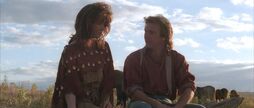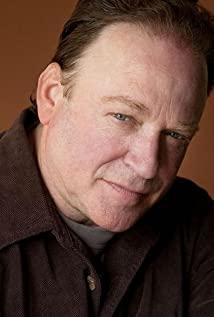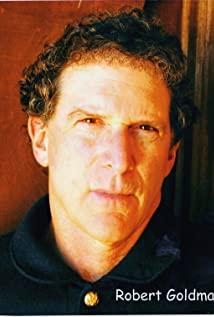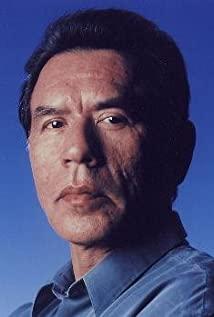Westerns have always presented elements of Indian culture, about the search for self-identity. Elements of an epic film: the grand scenes are exquisite and exquisite audio-visual experience, the perfect fit of American spirit and heroism.
Anti-Western perspective, creatively select the perspective of Indians to interpret. When Dunbar is alone and in touch with nature, he uses a large overhead angle and an empty lens pan to show this sacred place. Photographer Dean Semler is known for his good at shooting outdoor scenes and big scenes, and is good at using the time and space image of light to create an atmosphere. Dunbar and Indian soldiers set off in the morning smoke and rising sun, and celebrated by the bonfire under the blue night sky.
Rather than saying that this is a Western, it is better to say that this is a mix of Western performance elements and image quality. In terms of the theme and core of the film, there is no masculinity and heroism in Western films, and Dunbar has a disheveled and sloppy image. This subversion and deconstruction of the traditional hero image is precisely the biggest feature of cinematography.
Image as image symbol:
1 wolf
When Dunbar first saw "The Two White Sox", the director used the warm light effect of the evening, and repeatedly switched back and forth between Dunbar's subjective shot and the characteristic shots of the two White Sox, in order to highlight the A unique poetry and the closeness of the distance between them. The second time we met, the camera style was the same, but the vigilance in the wolf's eyes was reduced, and it was more of a desire to get close to Dunbar and show their spiritual communication. The third time we met, only two shots were used. It shows the end of the relationship between humans and wolves. In the first shot, Dunbar throws food, and in the second shot, two white socks run away and grab the food, almost without warning. The cross-editing between Dunbar and Little Wolf three times, as well as the use of repeated montage techniques three times, completes the narrative construction between Dunbar and Wolf from opposition to acceptance. The relationship between wolves, in the film, essentially alludes to the relationship between Indians and whites.
The film alludes to the integration of natural civilization and white civilization through the contrast montage and repeated montage of Dunbar feeding the wolves. Dunbar threw the food on the ground for the first feeding, and during the last feeding, the camera repeatedly close-up on Dunbar's hand. Switching between the close-up of the wolf and the wolf taking the food from his hand, this symbolizes the completion of the integration of natural civilization and white civilization.
2 buffalo
It is a very important image symbol. Dunbar and the Sioux mentioned the buffalo in the first conversation. The two showed great enthusiasm and yearning for the buffalo. The buffalo is a metaphor for natural civilization. In the next two narrative paragraphs, the director shows the completely different attitudes of whites and Indians towards natural civilization through contrast montages. At that time, 7 cameras, 150 group performances, 3,500 real cattle, and a helicopter were used... The first narrative segment, the big vision shows the cattle slaughtered by white people, and then a series of The Sioux held a moment of silence to show their untold heartache over the ruined natural civilization. At this time, the savage cruelty of white people was presented to the extreme. The Sioux people's attitude towards the natural civilization represented by the buffalo is full of sacredness. They believe that the buffalo is a gift from God, and they will perform sacred sacrifices to heaven in the form of dancing before hunting. The director's presentation of the Sioux hunting bison is a stark contrast montage with the previous white man's hunting, which makes the audience feel the harmony between man and nature. A close-up shot of the herd of cattle from a long-term perspective, a close-up of the speeding Sioux and the herd, and a fast-moving shot...
Dunbar killed the bison and rescued the Indian child, which became a turning point for the Sioux to accept Dunbar. Lens analysis: The bison occupies a third of the right side of the frame, and the child becomes a very small point in the distant view. The director uses the proportions to show danger and tension. A last-minute cross-cut is used here to intensify the tension.
The producers said the herd was the focal point of the shoot, so they settled on a large ranch in South Dakota, the world's largest private herd of 3,500 cattle.
3 Dances with Wolves
Pony's death led to Dunbar's first major decision to give up his so-called white identity, so when Dunbar was interrogated, he said in Aboriginal language that he was dancing with wolves. In front of his own kind, he chose to voluntarily give up the so-called white civilization that symbolizes civilization and wisdom, thus completing Dunbar's growth and self-naming.
The death of the little wolf further constitutes the direct incentive for Dunbar to personally kill the white civilization. When Dunbar witnessed the death of the wolf under the gun of the white man, the originally beautiful civilization was destroyed by the savage white man, Dunbar decided to kill the same kind.
After the inspiration of the buffalo, the sacrifice of the pony and the wolf, Dunbar completely completed the abandonment of the white civilization and the identification with the Indian civilization.
3. The guest of honor of the redeemer and the redeemed are reversed.
The greatest thing about the film is that it completely subverts the relationship between whites and Indians in Western films. Whites no longer appear as the redeemers of the Indians, and the Indians in the film become the redeemers and name-holders of the whites.
The most important character line in the film is the construction of the relationship between Dunbar and the Sioux leader. Wisdom and sagacity are built into the emblem of the Indians, the Sioux leader, a quality that is celebrated in the style of photography. When the Sioux leader first appeared, the picture was an open slanted composition, the sky was filled with three-quarters of the frame, the leader rode a white horse into the painting slowly, and the angle and open composition portrayed the wisdom of the Sioux leader.
The first third of the film focuses on the use of images to portray Dunbar's initial discomfort of being outside of civilization and the initial hostility and tension between Dunbar's white and Sioux leaders' Indians. Dunbar's relationship with Coyotes is handled in much the same way as Dunbar's handling of the Sioux. They approached each other in temptation, and finally accepted each other. Realize the dance of wolves.
The open ending of the film leaves the audience with room for deep thinking. When Dunbar and his wife chose to leave without dragging the Sioux tribe, the director used an upward shooting angle to repeat the call to Dunbar on the top of the mountain in the wind over and over again: "Together with Wolves" Dance, I'm in the wind, can you treat me as your friend? Can you always consider me your friend? . In the meaningful close-up, Lieutenant Dunbar looked at the wind for a long time, but did not give his own answer.
Director's statement: My only hope is that this film has an impact on you
force. It is a legendary retrospective of that horrific period in our history, when pioneering in the name of progress brought us so little and, so to speak, a heavy price to pay.
Desire and dreams, barbarism and violence are a theme that has been interpreted countless times in the consistent western narrative, and the essence of this classic film lies in the use of visual language to interpret the paradox between desire and dream. and tension, expressing the director's profound reflection. The director perfectly explores reflective philosophical propositions with images—that is, the difference and paradox between dream and reality, brutality and violence, communication and exclusivity, and perhaps the root of all evil is desire.
Director's own statement: If I had the privilege to see it, I would undoubtedly create other films, but if it is not possible, "Dancing With Wolves" is a film that has been my own since I was a child, and it will always be my favorite. A love letter from the past.
View more about Dances with Wolves reviews











